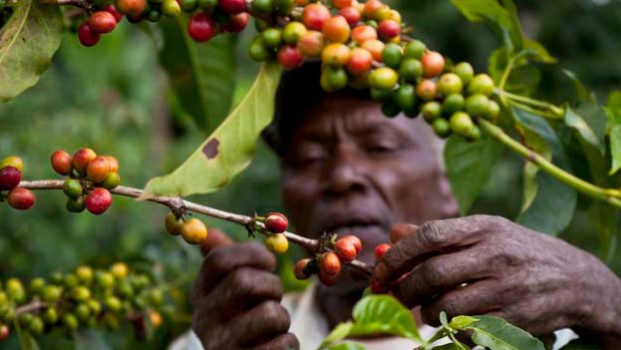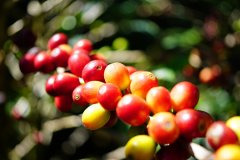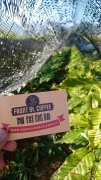Which producing area has the best floral butterfly flavor? description of floral butterfly flavor
For professional baristas, please follow the coffee workshop (Wechat official account cafe_style)

Panama-Pokuit flower butterfly-washing treatment
Boquete is a high-altitude volcanic area, because the Baru Volcano volcano brings quite fertile soil, towering terrain, cold and humid air, different sunshine, abundant rainfall, and rivers flow through it, creating high-quality Panamanian boutique coffee. This batch of coffee from the same growing area as the Emerald Manor happens to be located in continuous valleys and ridges, so it forms several microclimates, and the coffee produced in different regions has its own flavor. Refreshing and comfortable citrus feeling, bright pattern-like Nanyang fruit feeling, delicate floral fragrance crisscrossed with a very elegant and generous flavor.
What is special about this coffee bean is that it is made up of three varieties, of which 40% are rosy summer varieties, giving this coffee a distinct rosy summer flavor. According to the information obtained, due to the historical reasons of the manor, in order to pursue yield at that time, the early Rosa varieties were mixed with the coffee trees of Kaddura and Kaduai, and in order to facilitate picking, coffee farmers did not reclassify them, but directly mixed the three varieties.
After that, as Rosa rose to fame and the price soared, the processing plant began to carry out fine washing treatment for such a coffee bean. Nowadays, there are many ways of washing, but generally speaking, the floating beans are removed after the coffee fruit is picked, then the pulp is removed, and then the coffee beans are soaked in a fermentation trough. The enzymes in the water will soften the mucus attached to the peel of the coffee beans. Natural yeast will break down the sugar in the mucus, a process called fermentation. After the fermentation is completed, move the coffee beans to the sun field to dry. In the process of drying, you need to constantly turn the coffee beans to ensure the uniformity of the drying. Finally, the shell is kept in the warehouse, and some raw bean merchants place an order before shelling and bagging. The processed coffee tastes clean, emphasizing bright and lively acidity, as well as clear fruit flavor and floral aroma.
Important Notice :
前街咖啡 FrontStreet Coffee has moved to new addredd:
FrontStreet Coffee Address: 315,Donghua East Road,GuangZhou
Tel:020 38364473
- Prev

Yega Sheffield Konga Cooperative details what kind of coffee alliance YCFCU is.
For the exchange of professional baristas, please follow the coffee workshop (Wechat official account cafe_style) producing area: Yirgacheffe Konga Konga Cooperative altitude: 1800-2000m treatment method: Nature Washed/ traditional washing flavor description: lemon, orange, red apple, honey, light flower fragrance is located in the Sidama province of Yirgacheffe itself
- Next

Santa Teresa Manor in the Walken area of Panama Coffee introduces in detail the flavor of a single variety of Kaduai.
For the exchange of professional baristas, please follow the coffee workshop (official Wechat account cafe_style) Product name: Panama Santa Teresa Sun production area: Volcan Walken Manor: Finca Santa Teresa Santa Teresa Variety: Catuai Kaduai treatment: Natural Sun altitude: 1400-1800m Flavor description: rose, jujube, juicy Tatretha (
Related
- Detailed explanation of Jadeite planting Land in Panamanian Jadeite Manor introduction to the grading system of Jadeite competitive bidding, Red bid, Green bid and Rose Summer
- Story of Coffee planting in Brenka region of Costa Rica Stonehenge Manor anaerobic heavy honey treatment of flavor mouth
- What's on the barrel of Blue Mountain Coffee beans?
- Can American coffee also pull flowers? How to use hot American style to pull out a good-looking pattern?
- Can you make a cold extract with coffee beans? What is the right proportion for cold-extracted coffee formula?
- Indonesian PWN Gold Mandrine Coffee Origin Features Flavor How to Chong? Mandolin coffee is American.
- A brief introduction to the flavor characteristics of Brazilian yellow bourbon coffee beans
- What is the effect of different water quality on the flavor of cold-extracted coffee? What kind of water is best for brewing coffee?
- Why do you think of Rose Summer whenever you mention Panamanian coffee?
- Introduction to the characteristics of authentic blue mountain coffee bean producing areas? What is the CIB Coffee Authority in Jamaica?

